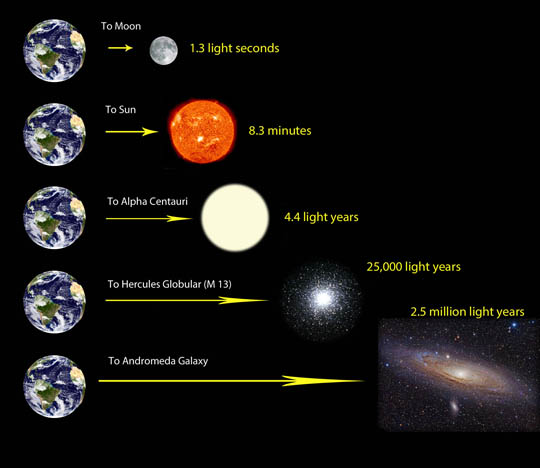
Our brains struggle to comprehend the magnitude of our universe. We make comparisons based on that which we can see, yet it is totally inadequate to what reality holds. For example, the average person is just under 2 meters tall. But their size of the Earth when compared to that is substantial. The mean diameter of our planet is 12,742 km (Universe Today). That’s nearly 6400 times in magnitude. (That means in one day, someone at the equator travels a speed of over 330 miles per hour, since the equatorial bulge makes its diameter even longer than the mean.)
The distance from our Sun to Pluto is much larger. At its farthest point, the distance is 50x the distance from the Earth to the Sun (Nasa). The distance to the near the edge of our solar system (the outer edge of the Oort Cloud), is 2000 times (NASA). At a speed of 100 mph, it would take us about 106,000 centuries to make it to that point. One light-year is around 1016 meters. If you think that is a long distance, the Milky Way Galaxy is 100,000 light-years across(Universe Today). But the universe contains many galaxies, spread out amongst the system. The nearest one is 2.5 million light-years away (Astronomy). The universe is such a large expanse our brains can not comprehend its immensity. This video (Powers of Ten) gives a small glimpse into it, by changing the power to which 10 meters is given, yet it can only do so much!










